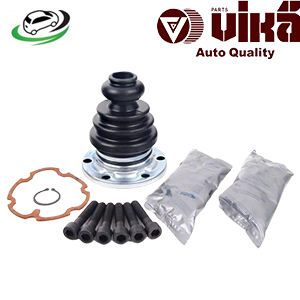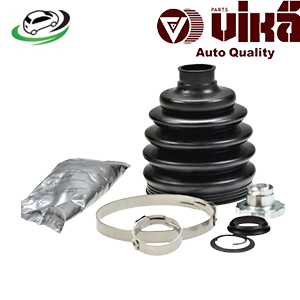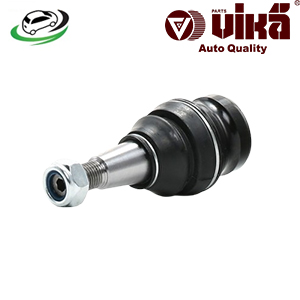-8%
Get Front Lower Suspension Straight Arm Ball Joint Audi A6/A6 Quattro/A7 Quattro/RS7/S6/S7/A5 Quattro/Q5/SQ5 4G0407689A
The arm ball joint is a critical component in a vehicle’s suspension system, playing a pivotal role in ensuring smooth and stable handling. To understand the importance and function of the arm ball joint, it’s essential to explore its anatomy, role in vehicle dynamics, common issues, maintenance, and the process of replacement.
Anatomy and Function of the Arm Ball Joint
The arm ball joint is a flexible pivot point that connects the control arms of a vehicle to its steering knuckles. These joints allow for controlled movement in multiple directions, enabling the suspension system to respond to the road’s surface while maintaining a connection between the wheels and the vehicle’s frame.
There are typically two ball joints in a vehicle’s suspension for each wheel—an upper and a lower ball joint—depending on the suspension design. In most vehicles, particularly those with a double wishbone or short-long arm (SLA) suspension, you’ll find both upper and lower ball joints. Meanwhile, in vehicles with a MacPherson strut suspension, there is usually only a lower ball joint.
Components of a Ball Joint
- Ball Stud: A spherical steel component that fits into a socket, allowing for rotational movement. The ball stud is attached to the control arm.
- Socket: The housing that encloses the ball stud. It’s often lined with a smooth, low-friction material like plastic or metal to allow for smooth movement.
- Boot: A rubber or plastic cover that seals the ball joint, protecting it from dirt, debris, and moisture.
- Lubrication: Inside the ball joint, grease is used to reduce friction and wear between the ball stud and the socket.
- Stud Shaft: The threaded part of the ball stud, which secures the ball joint to the steering knuckle.
Role of the Arm Ball Joint in Vehicle Dynamics
The arm ball joint is fundamental to a vehicle’s ability to steer and handle road conditions. It serves as a pivot point that allows the wheels to move up and down with the suspension while also turning left and right with the steering system. This dual movement is essential for maintaining contact between the tires and the road, which is critical for vehicle control, stability, and safety.
- Steering: The ball joint allows the wheels to pivot when the steering wheel is turned, facilitating smooth and responsive steering. The ball joint must maintain a precise angle to ensure that the vehicle responds accurately to driver inputs.
- Suspension Movement: The ball joint enables the suspension to absorb road bumps and undulations, maintaining a comfortable ride and preventing excessive wear on other suspension components.
- Alignment and Tire Wear: Properly functioning ball joints help maintain the correct alignment of the wheels. If a ball joint wears out, it can cause the wheels to misalign, leading to uneven tire wear and poor handling.
Common Issues with Arm Ball Joints
Over time, ball joints can wear out due to the constant stress and movement they endure. Several issues can arise with ball joints, each with specific symptoms:
- Wear and Tear: Ball joints naturally wear out over time due to the friction between the ball stud and the socket. As the joint wears, it can develop excessive play or looseness, leading to clunking noises, poor handling, and uneven tire wear.
- Contaminant Infiltration: If the protective boot on a ball joint becomes damaged, dirt, moisture, and other contaminants can enter the joint, accelerating wear and potentially leading to joint failure.
- Corrosion: Exposure to road salt, water, and other corrosive elements can cause rust and corrosion in the ball joint, compromising its strength and integrity.
- Loss of Lubrication: Over time, the grease inside the ball joint can degrade or leak out, leading to increased friction, heat, and wear. This can cause the joint to seize or fail prematurely.
Signs of a Failing Arm Ball Joint
Detecting a failing ball joint early can prevent further damage and ensure vehicle safety. Common signs of a worn or failing ball joint include:
- Clunking Noise: A knocking or clunking sound from the front suspension, especially when going over bumps or making turns, is a common indicator of a worn ball joint.
- Poor Handling: If the vehicle feels unstable, wanders on the road, or has excessive play in the steering, a worn ball joint could be the cause.
- Uneven Tire Wear: Abnormal or uneven tire wear, particularly on the inner or outer edges of the tires, can indicate that the ball joint is not maintaining proper wheel alignment.
- Excessive Vibration: A worn ball joint can cause excessive vibration in the steering wheel or the vehicle’s front end, especially at higher speeds.
- Loose or Squeaky Steering: If the steering feels loose or you hear squeaking noises when turning the wheel, it could be due to a worn ball joint.
Maintenance and Inspection of Arm Ball Joints
Regular maintenance and inspection of ball joints are crucial for preventing failures and ensuring vehicle safety. Here’s what you can do to maintain your ball joints:
- Regular Inspections: During routine vehicle maintenance, have your ball joints inspected for wear, damage, and lubrication. Mechanics typically check for excessive play in the joint and examine the condition of the protective boot.
- Lubrication: Some ball joints are serviceable, meaning they have a grease fitting that allows for periodic lubrication. Greasing these joints can extend their lifespan. However, many modern ball joints are sealed and do not require regular lubrication.
- Boot Condition: Inspect the protective boot regularly for cracks, tears, or other damage. A damaged boot should be replaced immediately to prevent contaminants from entering the joint.
Replacing a Worn Arm Ball Joint
Replacing a ball joint can be a complex task that may require specialized tools. Here’s a general overview of the replacement process:
- Preparation: Safely lift the vehicle and remove the wheel to access the ball joint. Ensure you have the correct replacement part and tools, such as a ball joint press.
- Remove the Old Ball Joint: Depending on the vehicle, you may need to remove the control arm or other suspension components to access the ball joint. The old ball joint is typically pressed out of its socket or bolted to the control arm.
- Install the New Ball Joint: The new ball joint is pressed or bolted into place. It’s crucial to ensure it’s installed correctly and securely to avoid future issues.
- Reassemble the Suspension: Reattach any components removed during the process, such as the control arm or steering knuckle. Torque all bolts to the manufacturer’s specifications.
- Alignment Check: After replacing the ball joint, it’s essential to have the vehicle’s alignment checked and adjusted if necessary. This ensures proper handling and prevents uneven tire wear.
- Test Drive: Finally, take the vehicle for a test drive to ensure the new ball joint is functioning correctly and the vehicle handles properly.
Follow us on Facebook for more parts.



